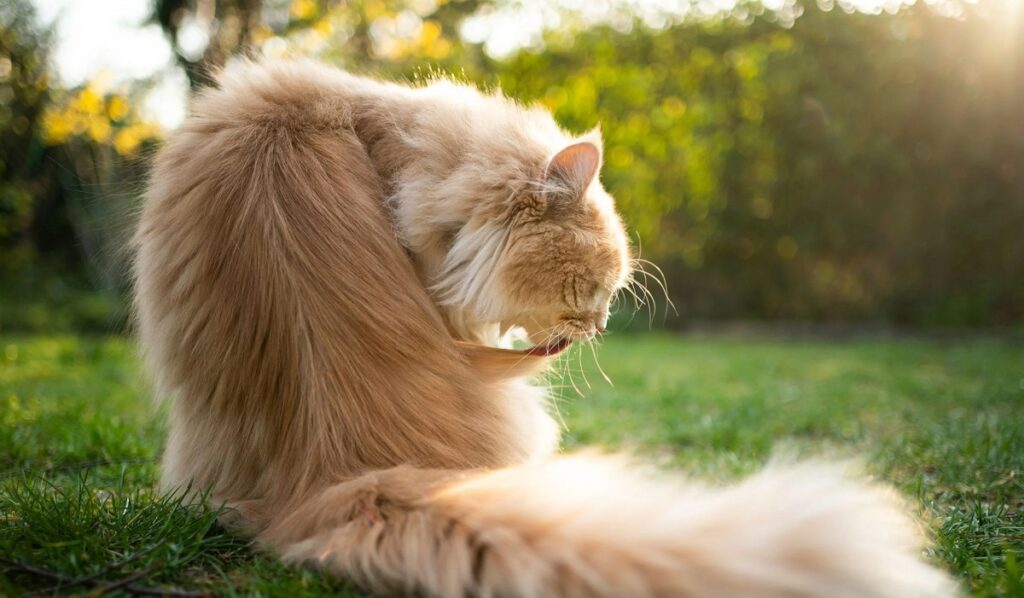Long-haired cats are undeniably gorgeous with their flowing, silky coats, but keeping them looking their best requires effort. Unlike short-haired breeds, their fur can easily become tangled, matted, and filled with debris. Proper grooming and hygiene practices are essential to keep them comfortable and healthy.
If you have a long-haired feline friend, this guide will walk you through everything you need to know to keep their luxurious coat in top condition.
Why Long-Haired Cats Need Special Care
Long-haired cats require more attention when it comes to grooming and hygiene compared to their short-haired counterparts. Their thick coats can trap dirt, debris, and even parasites if not properly maintained.
One of the biggest concerns for long-haired cats is matting. Once their fur becomes tangled, it can pull on their skin, causing discomfort or even infections. They are also more prone to hairballs since they ingest a lot of hair while grooming themselves. This makes diet and grooming essential for their well-being.
Grooming Essentials for Long-Haired Cats
Brushing Techniques and Frequency
Daily brushing is one of the most important aspects of caring for a long-haired cat. Their fur can quickly become tangled, leading to painful mats. To avoid this:
- Use a wide-tooth comb to gently remove knots.
- A slicker brush works well for detangling and removing loose fur.
- Brush in the direction of hair growth to avoid discomfort.
- Start with short sessions and offer treats to make grooming enjoyable.
Dealing with Mats and Tangles
Despite regular brushing, mats can still form, especially behind the ears, under the armpits, and around the tail. Here’s how to remove them safely:
- Use a detangling spray or a little coconut oil to loosen the knots.
- Work through the mat gently with your fingers before using a comb.
- If the mat is severe, it’s best to let a professional groomer handle it.
Bathing Your Long-Haired Cat
Unlike short-haired cats, long-haired breeds benefit from occasional baths. A monthly bath can help remove excess oil, dirt, and loose hair.
- Use a cat-friendly shampoo designed for long coats.
- Avoid getting water in their ears and eyes.
- Dry them thoroughly with a towel and use a low-heat hairdryer if they tolerate it.
Managing Hairballs and Shedding
Dietary Solutions for Hairball Prevention
Hairballs are a common issue for long-haired cats since they swallow a lot of fur while grooming. You can minimize this problem by:
- Feeding them a fiber-rich diet to help pass the hair naturally.
- Providing plenty of fresh water to aid digestion.
- Offering hairball control cat food designed to reduce fur buildup.
Supplements for Coat Health
A healthy diet contributes to a silky, tangle-free coat. Consider adding:
- Omega-3 and Omega-6 fatty acids to keep fur soft and shiny.
- Vitamin E and Biotin for coat strength.
- Regular vet check-ups to ensure they’re getting the right nutrients.
Keeping Their Living Environment Clean
Reducing Loose Fur Around the Home
With long-haired cats, fur gets everywhere! To keep your home clean:
- Use a lint roller or pet hair remover on furniture and clothing.
- Invest in a robot vacuum to help pick up loose hair.
- Wash their bedding frequently to prevent fur buildup.
Maintaining a Hygienic Litter Box
Long fur can trap litter, leading to hygiene issues. To prevent this:
- Choose a low-dust, clumping litter that won’t stick to their fur.
- Trim the fur around their paws and rear to reduce mess.
- Scoop the litter box at least twice daily to keep it fresh.
Health Issues Common in Long-Haired Cats
Skin Infections and Irritations
Tangled and dirty fur can cause skin infections. Watch for:
- Redness, flakiness, or sores on their skin.
- Excessive scratching or licking.
- Regular brushing and bathing can help prevent these issues.
Eye and Ear Care
Long-haired cats may also develop eye and ear problems due to fur blocking air circulation.
- Wipe their eyes with a damp cloth to remove tear stains.
- Check their ears weekly for wax buildup or infections.
- Use a vet-approved ear cleaning solution when necessary.
Conclusion
Caring for a long-haired cat takes time and effort, but it’s worth it when you see their coat soft, shiny, and free from tangles. With regular brushing, proper nutrition, and a clean environment, your fluffy companion will stay comfortable and happy. By following these tips, you’ll keep their majestic fur looking its best while ensuring they stay healthy and well-groomed.
FAQs
How often should I brush my long-haired cat?
Daily brushing is ideal to prevent tangles and mats.
What is the best brush for long-haired cats?
A combination of a slicker brush and a wide-tooth comb works best.
How can I prevent my long-haired cat from getting hairballs?
A high-fiber diet and hairball control treats help reduce hairballs.
Do all long-haired cats need regular baths?
Yes, a monthly bath can help keep their fur clean and reduce shedding.
What is the best way to remove cat hair from furniture?
Lint rollers, vacuuming, and pet hair remover tools are highly effective.

